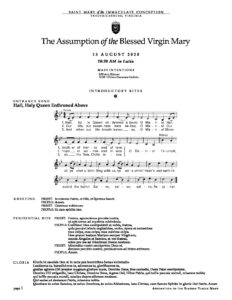

Nominative "mariā" might be more fitting, since that is the vowel length in Ancient Greek (Μαρίᾱ), whence the word initially came into Latin. de Vaan's Etymological Dictionary of Latin and other Italic Languages (2008): Sihler's New Comparative Grammar of Greek and Latin (1995) and M.


This is a wonderful piece of reconstruction! However, I have a few remarks based on A. **** Āmēn is a transliteration of Koine Greek ᾱ̓μήν (āmḗn), which Latin borrowed from. *** Tempos is used to translate hour since the Latin word hōrā is borrowed from the Ancient Greek word ὥρα (hṓra) and has no cognate in Proto-Italic. ** Preksā is a verb created by adding the first conjugation paradigm ending to the Proto-Italic word preks (prayer). * Hawē is a direct transliteration of Punic ḥawe, which the Latin word avē derives from. These terms are marked with asterisks and their origins explained below.Īnd blessed is the fruit of thy womb, Jesus.Įt benedictus frūctus ventris tuī, Iēsūs.Įti lau(V)dātā frūktus uderosjo towosjo, Iḗsūs. I tried using as many cognates as possible, but I kept personal names and the Latin words avē and āmēn (borrowed from other languages) identical to their Latin forms. I recently tried to translate the Catholic "Hail Mary" prayer from Latin into Proto-Italic.


 0 kommentar(er)
0 kommentar(er)
